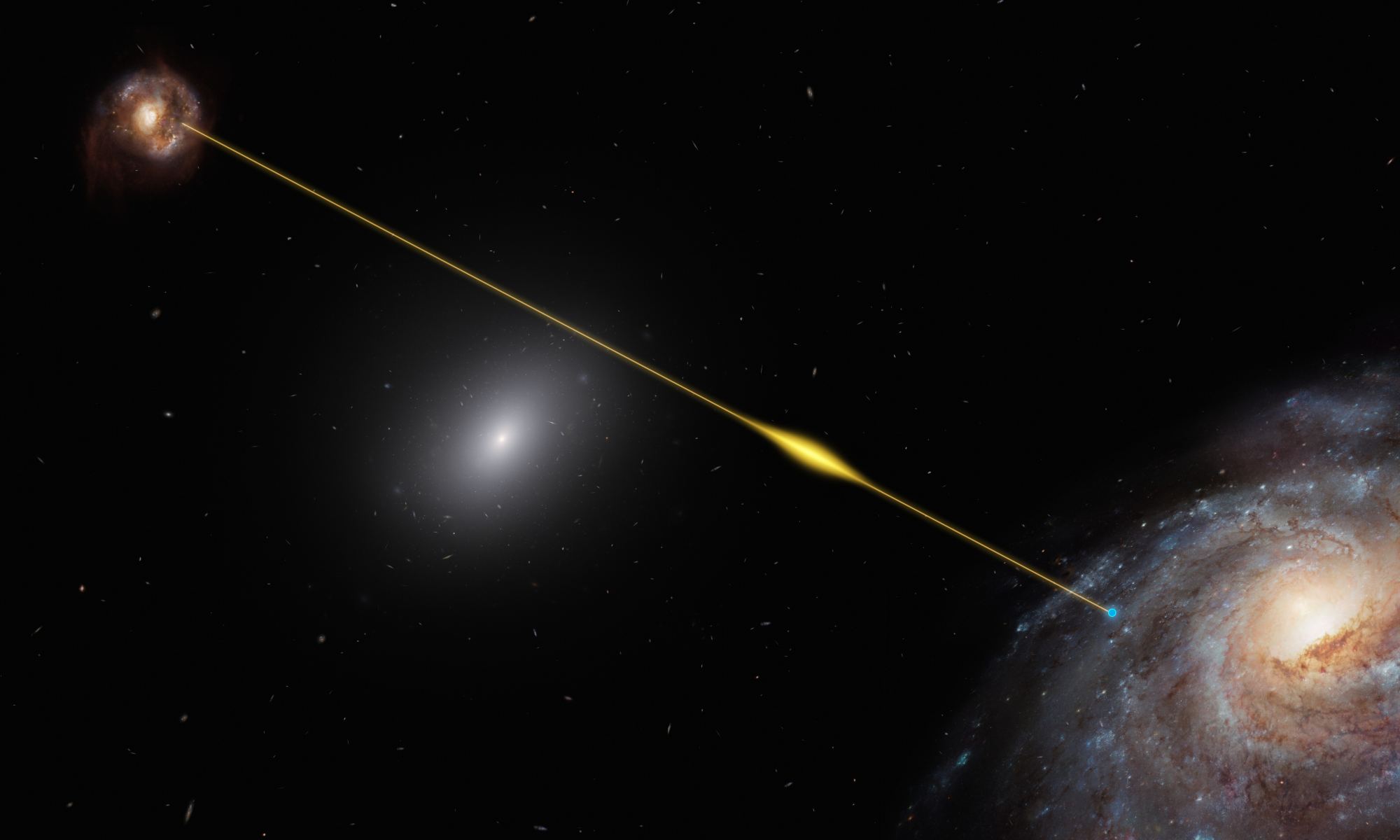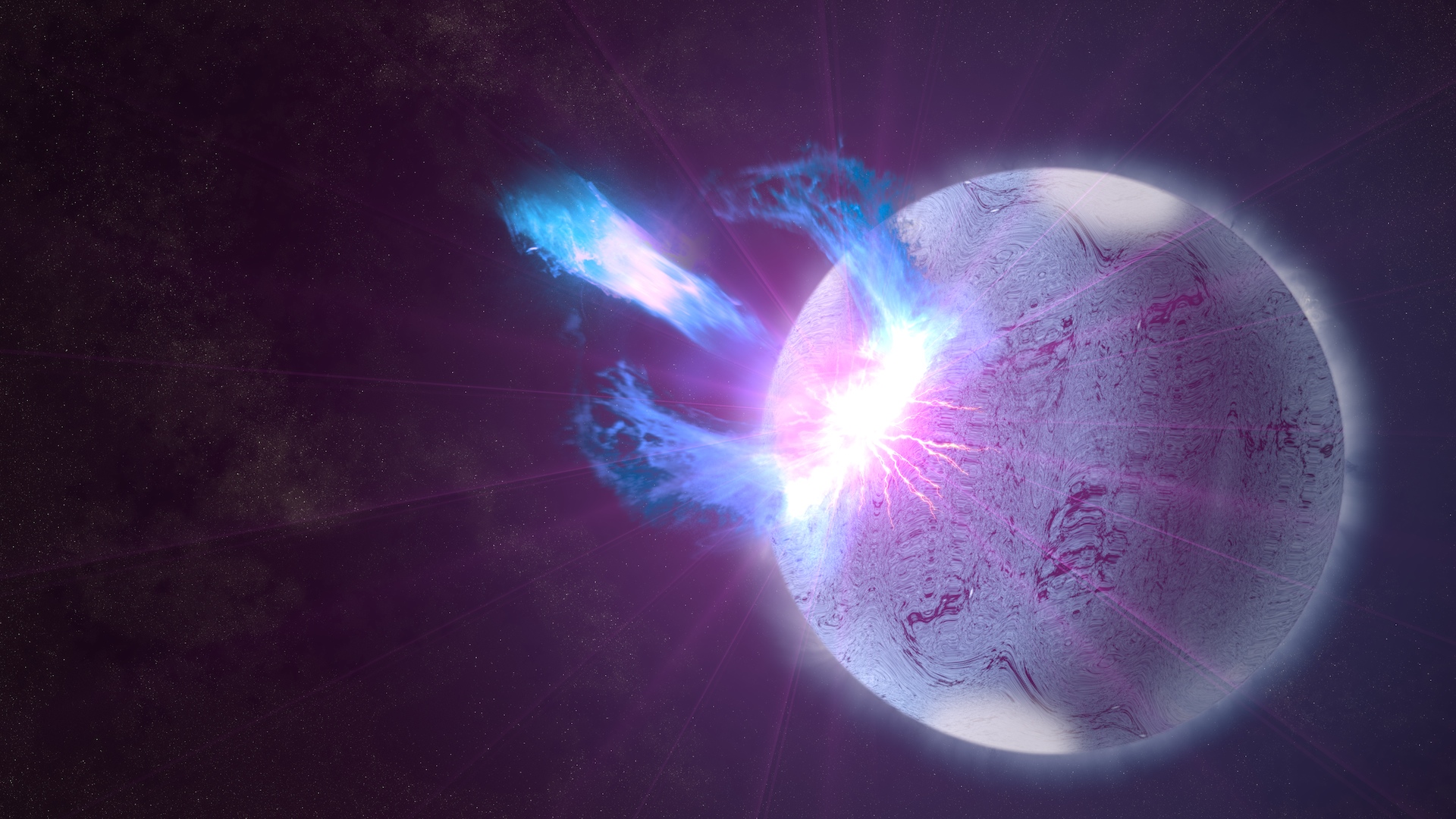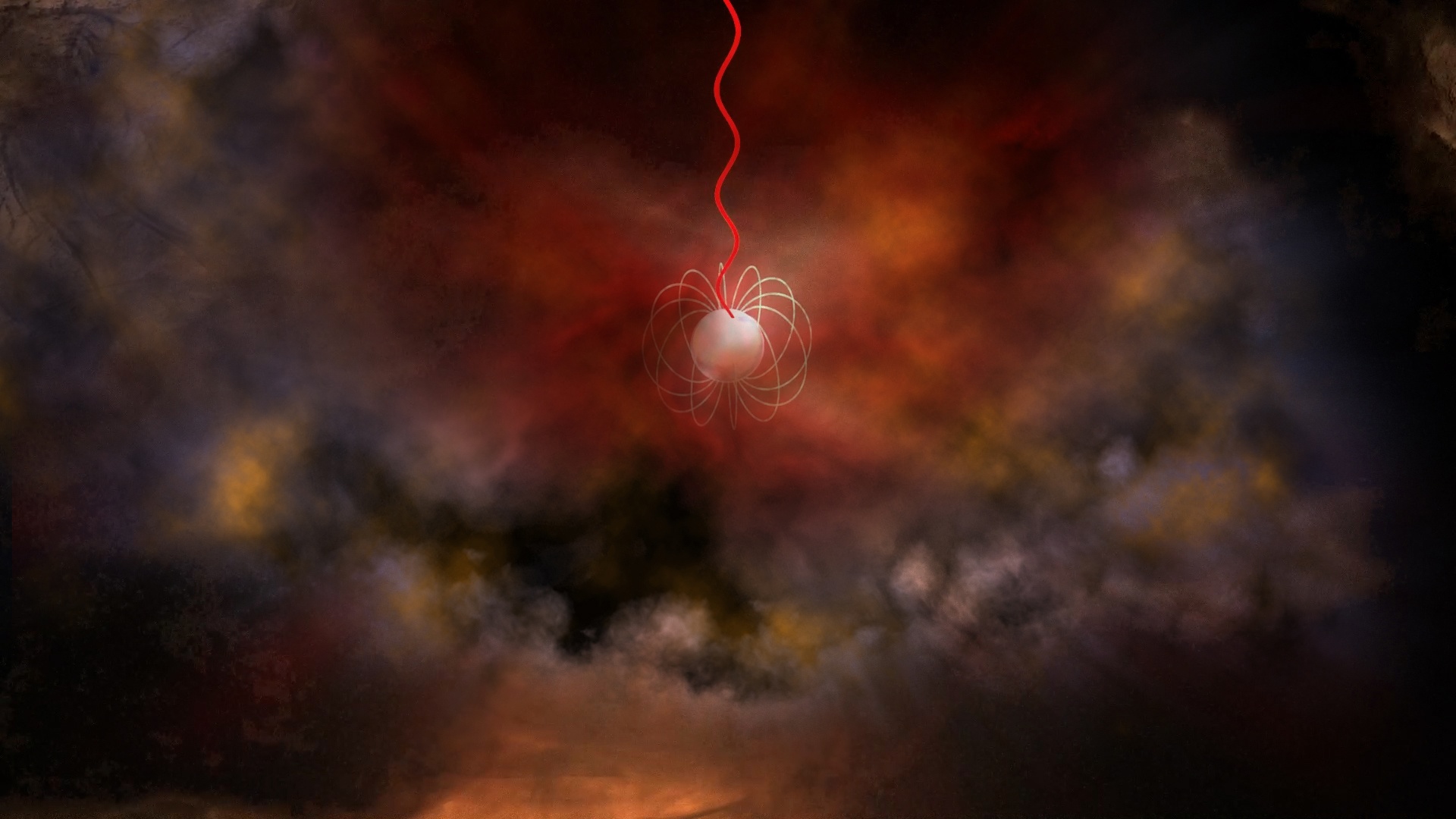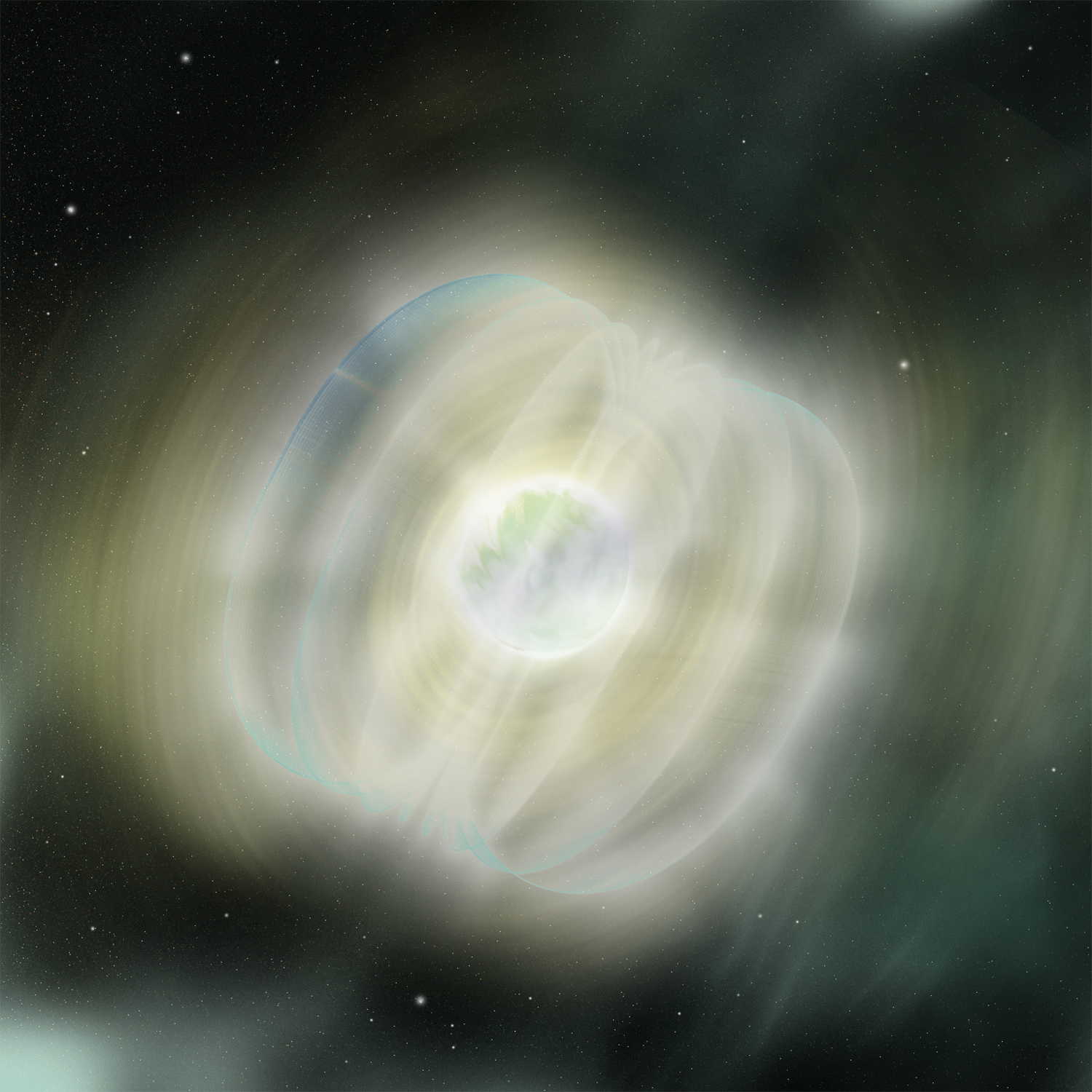Fast Radio Bursts are an astrophysical enigma. They are intense bursts of radio energy lasting anywhere from a fraction of a millisecond to a few seconds, typically with a frequency of around 1,400 MHz, and we still don’t know what causes them. They were first detected in 2007 but were initially so rare and short-lived that it was difficult to confirm they weren’t terrestrial in origin. With the inauguration of the CHIME telescope and other wide-field radio observatories, we started observing lots of them, which confirmed they were both astrophysical and mostly coming from outside our galaxy. Now one has been observed from a galaxy 8 billion light years away, and it could help us solve a cosmological mystery.
Continue reading “A Fast Radio Burst Took 8 Billion Years to Reach Us”Magnetars are Extreme in Every Way, Even Their Volcanoes
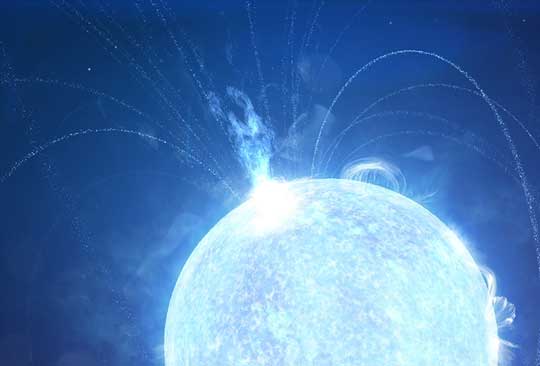
In a recent study published in Nature Astronomy, an international team of researchers led by NASA and The George Washington University examined data from an October 2020 detection of what’s known as a “large spin-down glitch event”, also known as an “anti-glitch”, from a type of neutron star known as a magnetar called SGR 1935+2154 and located approximately 30,000 light-years from Earth, with SGR standing for soft gamma repeaters. Such events occur when the magnetar experiences a sudden decrease in its rotation rate, which in this case was followed by three types of radio bursts known as extragalactic fast radio bursts (FRBs) and then pulsed radio emissions for one month straight after the initial rotation rate decrease.
Continue reading “Magnetars are Extreme in Every Way, Even Their Volcanoes”A new Hubble Image Reveals a Shredded Star in a Nearby Galaxy
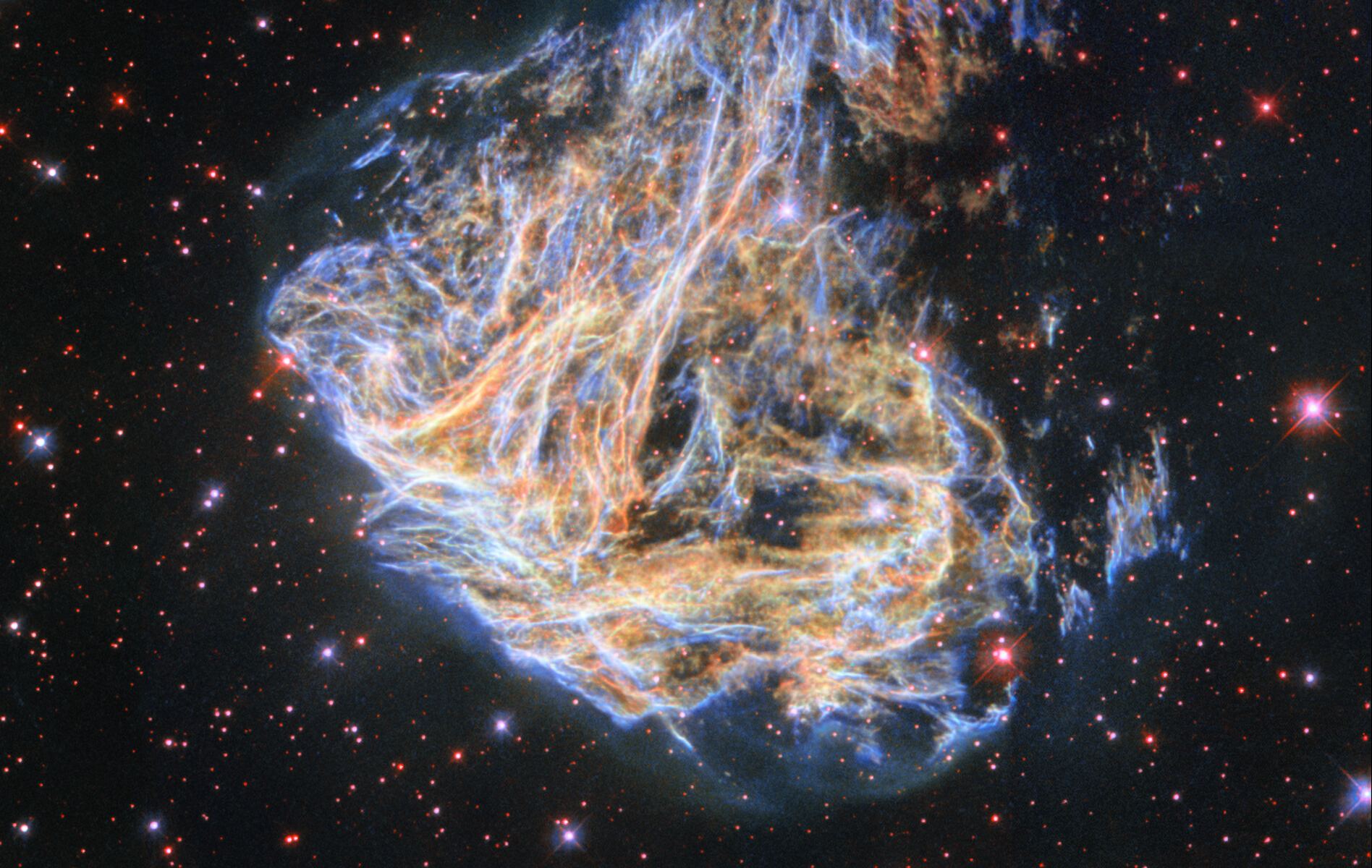
The Hubble Space Telescope, to which we owe our current estimates for the age of the universe and the first detection of organic matter on an exoplanet, is very much doing science and still alive. It’s latest masterpiece remixes an old hit – apparently a growing trend in space science as well as space music.
Continue reading “A new Hubble Image Reveals a Shredded Star in a Nearby Galaxy”A new Record for the Strongest Magnetic Field Seen in the Universe: 1.6 Billion Tesla
A team of astronomers using the Chinese Insight-HXMT x-ray telescope have made a direct measurement of the strongest magnetic field in the known universe. The magnetic field belongs to a magnetar currently in the process of cannibalizing an orbiting companion.
Continue reading “A new Record for the Strongest Magnetic Field Seen in the Universe: 1.6 Billion Tesla”A Rare Repeating Fast Radio Burst Gives Astronomers a Chance to Study These Mysterious Objects
Fast Radio Bursts (FRBs) are among the most mysterious astronomical phenomena facing astronomers today. While hundreds of bursts have been detected since the first-ever recorded detection of an FRB in 2007 – the Lorimer Burst – astronomers are still unsure what causes them. Even more mysterious, some have occasionally been found to be repeating in nature, which has fueled speculation that they may not be natural in origin (i.e., possible alien transmissions?). Astronomers are naturally very excited whenever a repeating FRB is found, as it gives them the chance to examine them closer.
In a recent survey, an international team of scientists used three major telescopes worldwide to study a repeating FRB (known as FRB 190520) that was first observed in 2019. According to their observations, this particular FRB is not just a repeating source from a compact object but a persistent one that emits low-level bursts of radio waves between larger ones. These findings raise new questions about the nature of these mysterious objects and how they can be used as tools to probe the space between stars and galaxies.
Continue reading “A Rare Repeating Fast Radio Burst Gives Astronomers a Chance to Study These Mysterious Objects”A Pulsar has Been Found Turning so Slowly Astronomers Didn't Even Think it was Possible: Once Every 76 Seconds
Astronomy is progressing rapidly these days, thanks in part to how advances in one area can contribute to progress in another. For instance, improved optics, instruments, and data processing methods have allowed astronomers to push the boundaries of optical and infrared to gravitational wave (GW) astronomy. Radio astronomy is also advancing considerably thanks to arrays like the MeerKAT radio telescope in South Africa, which will join with observatories in Australia in the near future to create the Square Kilometer Array (SKA).
In particular, radio astronomers are using next-generation instruments to study phenomena like Fast Radio Bursts (FRBs) and neutron stars. Recently, an international team of scientists led by the University of Manchester discovered a strange radio-emitting neutron star with a powerful magnetic field (a “magnetar”) and an extremely slow rotational period of 76 seconds. This discovery could have significant implications for radio astronomy and hints at a possible connection between different types of neutron stars and FRBs.
Continue reading “A Pulsar has Been Found Turning so Slowly Astronomers Didn't Even Think it was Possible: Once Every 76 Seconds”Astronomers Detect the Closest Fast Radio Burst Ever Seen
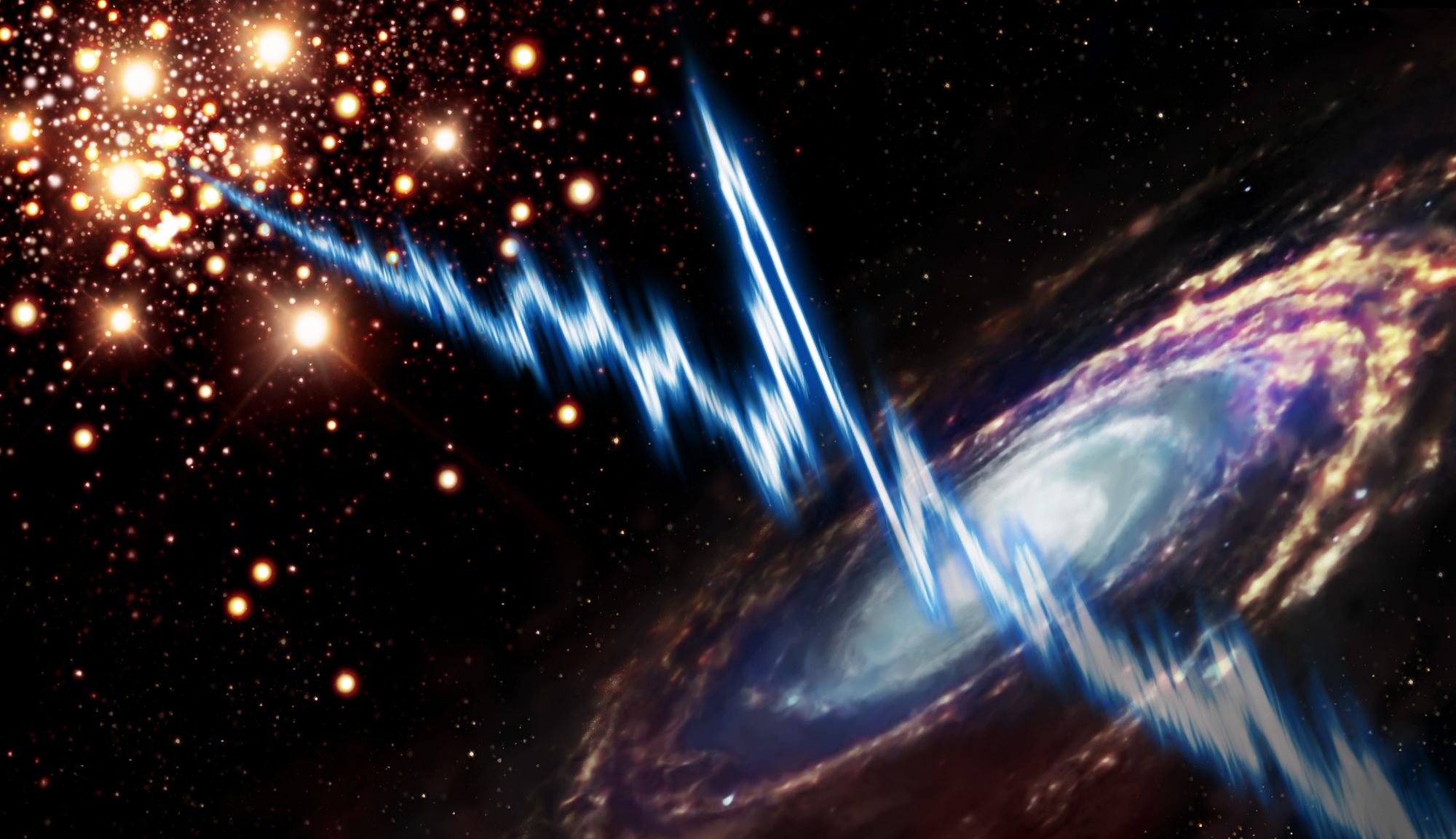
Fast Radio Bursts (FRBs) are among the top mysteries facing astronomers today. First discovered in 2007 (the famous “Lorimer Burst“), these energetic events consist of huge bursts of radio waves that typically last mere milliseconds. While most events observed to date have been one-off events, astronomers have detected a few FRBs that were repeating in nature. The cause of these bursts remains unknown, with theories ranging from rotating neutron stars and magnetars to extraterrestrials!
Since the first event was detected fifteen years ago, improvements in our instruments and dedicated arrays have led to many more detections! In another milestone, an international team of astronomers recently made high-precision measurements of a repeating FRB located in the spiral galaxy Messier 81 (M81)- the closest FRB observed to date. The team’s findings have helped resolve some questions about this mysterious phenomenon while raising others.
Continue reading “Astronomers Detect the Closest Fast Radio Burst Ever Seen”Astronomers Discover a Mysterious Star That Flashes Every 20 Minutes. But What is it?
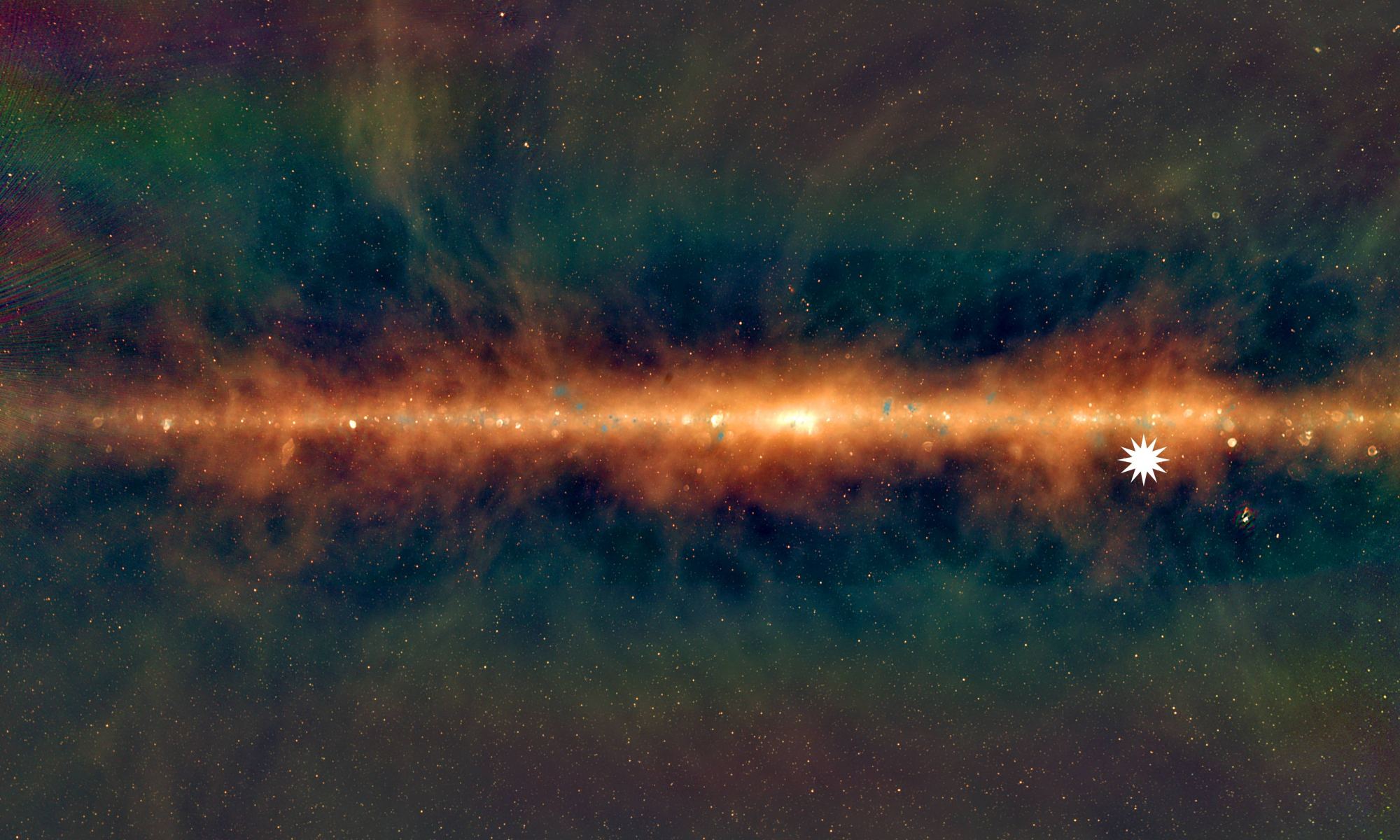
Just 4,000 light-years from Earth is a strange, star-sized object. It’s been observed by radio telescopes, but astronomers aren’t sure what it is. They call it a long period transient.
Continue reading “Astronomers Discover a Mysterious Star That Flashes Every 20 Minutes. But What is it?”Astronomy Jargon 101: Magnetars
In this series we are exploring the weird and wonderful world of astronomy jargon! Hang on to your magnetic hats, because today’s topic is magnetars!
Continue reading “Astronomy Jargon 101: Magnetars”Hubble Has Tracked Down the Source of 5 Different Fast Radio Bursts
In a new survey, astronomers using the Hubble Space Telescope have managed to pinpoint the location of several Fast Radio Bursts (FRBs). FRBs are powerful jets of energy that, until recently, had mysterious, unknown origins. The research team, which includes University of California Santa Cruz’ Alexandra Manning and Sunil Simha, as well as Northwestern University’s Wen-fai Fong, performed a survey of eight FRBs, from which they were able to determine that five of them originated from a spiral arm in their host galaxies.
Continue reading “Hubble Has Tracked Down the Source of 5 Different Fast Radio Bursts”
